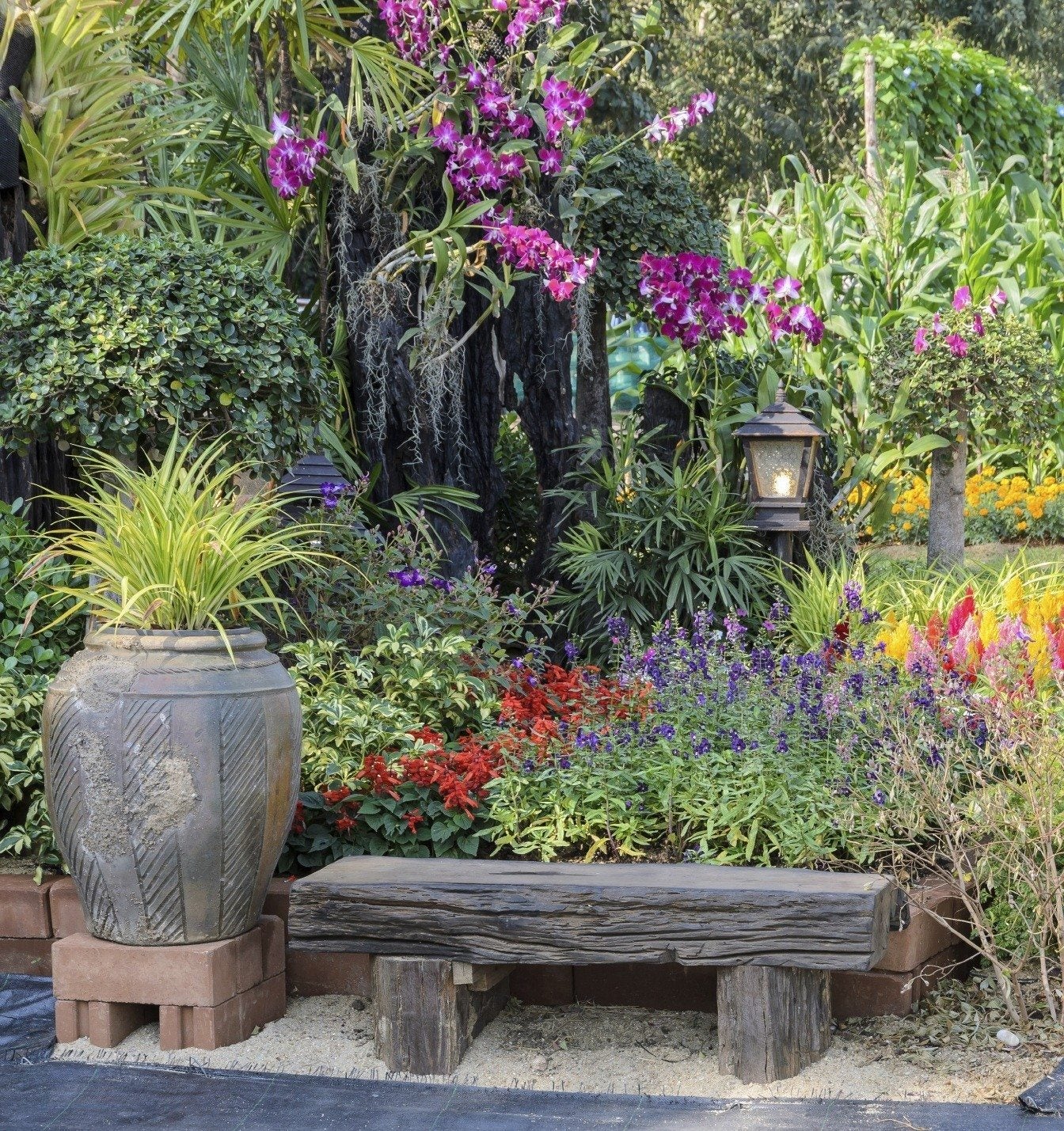Using Plants For Color: Ideas For Garden Color Schemes


Adding color to the garden is more than simply picking a bunch of colorful garden plants. There are a few things that need to be taken into consideration first. Read on to find out what these are and get additional tips to help make this endeavor an easier one.
Choosing Colorful Garden Plants
Working in plant sales, I am often asked to suggest the best plants for color. I usually answer this question with other questions-- like "Are you looking for color in a sunny location or in shade?" and "What colors do you feel most drawn to, and why?" These are things to consider when picking out colorful garden plants. Additionally, garden color schemes can have various effects on the look and mood of the landscape.
- Warm color combinations like yellow, orange, and red, can make a large garden bed seem smaller or a distant bed seem closer, while also creating an upbeat, energetic mood in the garden.
- Cool color combinations such as blue, purple, and silver can make a small bed seem larger, while creating a calm, relaxing environment.
The color wheel is helpful when planning garden color schemes. Colors that are next to each other on the color wheel, like blue and violet or orange and yellow, are considered harmonious. Colors that appear opposite each other on the color wheel, like violet and yellow or red and green, are considered complementary or contrasting. You can also use monochromatic colors when adding color to the garden. For instance, if blue is your favorite color, you could create a bed of different plants with blue flowers or foliage, such as globe blue spruces, hydrangeas, caryopteris, and campanula.
Using Plants for Color in Shade
When choosing the best plants for color in a shade garden, keep in mind that bright colors will brighten up a shady area, while darker colors can make it appear bleak or get lost in the shade. For example, it is easy to fall in love with all the variations of heuchera, but it is best to combine them with contrasting plants like bright pink astilbe, golden Japanese forest grass, or neutral colors like green, white, and silver.
Using Plants for Color in Sun
Choosing colorful garden plants for a sunny bed is much easier, as sun-loving plants tend to be quite colorful. Just choose your preferred color scheme – harmonious, complementary, or monochromatic – and have fun with it. Add brightly colored garden accents like chairs, trellises, and bird baths for more color and texture.
Color Throughout the Growing Season
Colorful garden plants come in all varieties. For color that lasts throughout the growing season, pay attention to plant flowering periods and use a variety of annuals, perennials, shrubs, and even trees, if you'd like. Annuals can be the best plants for color throughout the growing season because many of them have long flowering periods and keep the color going after spring perennials have faded but summer plants have not yet flowered. Annuals also give you room to play and try out new things each year; if you have monochromatic shrubs and perennials, you can still try out a bolder garden color scheme by planting contrasting annuals. Many spring or summer flowering shrubs have colorful fall foliage, adding color to the garden even after most flowers have faded.
Sign up for the Gardening Know How newsletter today and receive a free copy of our e-book "How to Grow Delicious Tomatoes".

Darcy is a former contributor to Gardening Know How. She is a professional landscape designer and gardening writer with experience in plant sales. An avid gardener, Darcy has a passion for sharing practical tips to help others grow.